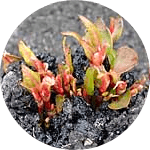Common Nettle Removal & Control

The overview
Common Name: Common nettle
Latin name: Urtica dioica
In Detail
- Individual plants are either male or female, when growing together fertilised female plants can produce large numbers of seed.
- The plants can also spread via creeping root system. Surface stems can root at nodes, producing new aerial shoots.
- Nettles are great for wildlife and are the food source for the caterpillars of a number of butterflies including small tortoiseshell and peacock.
Who we help
We have a long track record of managing some of the most complex sites in the country and have worked with the Environment Agency on several large flood alleviation projects, as well as providing advice to the majority of house builders and developers in the UK.
Click here to view who we help







Habitat & Distribution
- Common nettle is a native species that can be found throughout the UK, favouring damp fertile and disturbed ground. It is found growing in a range of habitats including; farmland, grasslands, hedgerows, road side verges, woodlands and gardens.
What’s the problem?
- Common nettle can quickly spread creating dense stands which outcompete other species for water and nutrients.
- It germinates readily from seeds and also spreads by rhizome.
- Plants are very tolerant of extreme climatic conditions.
- Common nettles are covered in many stinging hairs (trichomes) which cause painful stings when touched.
Identification
- Common nettle is a perennial species which can grow 1m to 2m in height.
- It forms soft green leaves, 3cm to 15cm in length which are strongly toothed.
- Leaves and stems are very hairy
- Forms numerous drooping, catkin flowers which are greenish or brownish in colour.
What are the legal implications? *England
- Common nettle is not covered under any legislation.
Control Methods
Chemical Control
The best time to apply herbicides is when the plant is vigorously growing and before flowing, a second application may also be required later in the season to effectively control the infestation.
Mechanical Control
Mechanical excavation can be effective at removing infestations, however, it is important to remove all of the creeping stems as each node section has the ability of producing a new plant. Repeated mowing over a number of seasons is also effective at reducing cover.
If you have concerns over Common nettle on your land, or if you would like a quotation for control, please contact one of our specialist surveyors. Treatment costs start from £380.00 + VAT.

Where we have worked
We operate nationwide with a Rapid Response Team on standby 7 days a week, to deal with the most urgent client enquiries.
We’re a dedicated team of professionals who share a great deal of experience. We invest heavily in the continual training of all our employees, ensuring you always have a highly qualified team working on your project with the latest industry accreditations.
Our process

1. Identify
Our first step is to identify if you have an invasive plant. For a quick ID, you can send us some photos. Alternatively, we can carry out a full site survey to confirm the extent of the infestation.

2. Solution
We will provide a range of treatment options individually tailored depending on your site requirements.

3. Quote
A detailed breakdown of costs for each phase of treatment will be provided, including on-going monitoring programmes with insurance backed guarantees.

4. Removal
Our experienced and professional in-house teams will carry out the treatment to the highest of standards to achieve full eradication. All works are carried out in accordance with the INNSA Code of Practice.

5. Treatment
A range of treatment solutions are available, from in-situ herbicide application to excavation and removal or burial. All carried out in-house by our experienced team.

